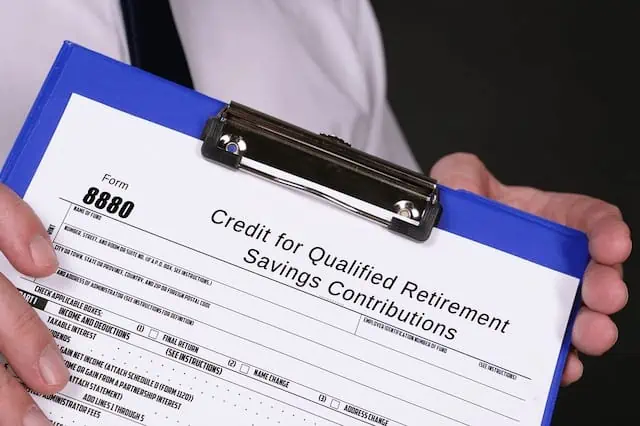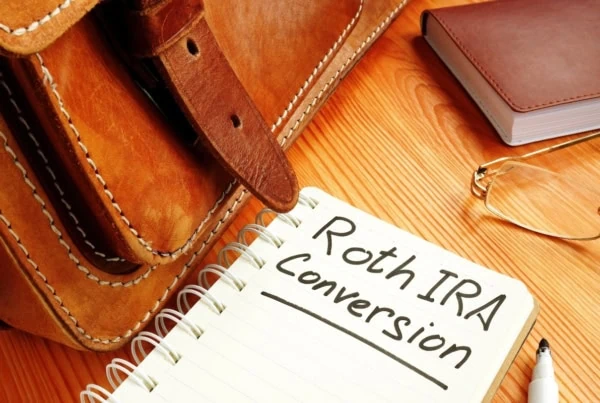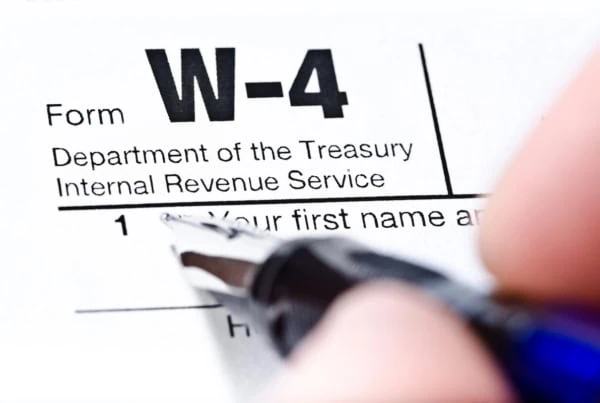You can’t start saving for retirement too soon. That’s why tax breaks like the Saver’s Credit are so important.
Officially called the “Retirement Savings Contributions Credit,” the Saver’s Credit helps low- and moderate-income taxpayers kick start their retirement savings by rewarding qualified people who make eligible contributions to a retirement account. It’s especially helpful for young people who are just beginning their careers and might need a gentle nudge to start saving for their golden years.
Do you qualify for the Saver’s Credit? If so, how much is it worth and how do you claim it? I’ll answer these questions and more so you can see whether the Saver’s Credit can help your bottom line. You definitely want to claim this tax credit on your next tax return if you qualify. Otherwise, you’re just leaving free money on the table.
Related: What’s Your Standard Deduction?
Who’s Eligible For the Saver’s Credit?

Not everyone can claim the Saver’s Credit. First, you must actually contribute to a qualified retirement account or ABLE account during the year. You must also satisfy certain personal requirements, and your income can’t be too high.
Let’s take a closer look at each of these eligibility requirements.
Qualified Retirement Savings Contributions
To claim the Saver’s Credit, you must put money into an ABLE account or one of the following types of retirement accounts during the year:
- Traditional or Roth individual retirement account (IRA)
- SIMPLE IRA
- 401(k) plan
- 403(b) plan
- Governmental 457(b) plan
- Simplified employee pension (SEP) plan
- Federal Thrift Savings Plan (TSP)
- 501(c)(18)(D) pension plan
Rollover contributions to a traditional or Roth IRA don’t qualify for the credit. In addition, recent distributions from certain retirement accounts and ABLE accounts are subtracted from eligible contributions for Saver’s Credit purposes.
If you contribute to an ABLE account, you must be the designated beneficiary of the account. Contributions to an ABLE account made after 2025 don’t qualify for the Saver’s Credit.
- Robinhood is a pioneer in the investing app world, offering no-commission equity trades on stocks and ETFs, plus on options and cryptocurrency.
- Investing for retirement? Robinhood will match 1% of any IRA transfers or 401(k) rollovers, as well as any annual contributions*, made to your Robinhood Retirement account—and you can get a 3% match on any new contributions if you subscribe to Robinhood Gold.
- Robinhood's robo-advisory service, Robinhood Strategies, will build you a custom portfolio of stock and bond ETFs (and individual stocks for accounts with at least $500), for a low 0.25% in AUM, which is capped at $250 annually for Robinhood Gold members.
- Robinhood Gold also includes Level II market data provided by Nasdaq, higher interest rates on uninvested brokerage cash, lower margin trading rates, bigger Instant Deposits, and access to the Robinhood Gold Card (a 3% cash-back Visa credit card).
- Special offer: Sign up for Robinhood, link a bank account, and fund your account with at least $10, and receive a randomly selected cash amount between $5 and $200 to put toward certain fractional shares.
- 1% match on rollovers, IRA transfers, and new contributions to IRAs and Roth IRAs (3% new-contribution match with Robinhood Gold)
- Automated recommended portfolios
- Intuitive interface
- Extensive educational library
- Robo-advisory service (Robinhood Strategies)
- No mutual funds
- Match doesn't apply to Robinhood Strategies accounts
Related: 30 Tax Statistics and Facts That Might Surprise You
Age and Other Personal Requirements
To claim the Saver’s Credit on your tax return, you must satisfy all three of the following requirements:
- You must be at least 18 years old by the end of the tax year.
- You can’t be claimed as a dependent on someone else’s tax return.
- You can’t be a full-time student during the tax year.
You’re considered a student for this tax credit if, during any part of five calendar months during the year, you either:
- Were enrolled as a full-time student at a school
- Took a full-time, on-farm training course given by a school or a state, county, or local government agency
A “school” for purposes of the credit includes technical, trade, and mechanical schools. However, it doesn’t include on-the-job training courses, correspondence schools, or schools only offering online courses. A student is considered a full-time student if he or she is enrolled for the number of hours or courses the school considers to be full-time.
YATI Tip: While the Saver’s Credit isn’t for minors, it’s still a great idea to set up a retirement account for children. One of the best options is to open a custodial Roth IRA for kids who have earned income (e.g., from an after-school or summer job). Money in the account will grow tax-free for decades. While income tax must be paid on the amount contributed if the child has to file a tax return, the tax rates that kids face are typically very low.
Related: IRS Delays 1099-K Rules: What PayPal, Venmo, StubHub Users Need to Know
Adjusted Gross Income Limits
The Saver’s Credit is only for low- and moderate-income individuals. So, to claim the credit, your adjusted gross income must be at or below a certain amount, which is based on your filing status.
YATI Tip: For purposes of the credit, don’t include in your adjusted gross income any exclusion or deduction for foreign earned income, foreign housing, income from Puerto Rico, or income for bona fide residents of Guam, American Samoa, or the Northern Mariana Islands.
For the 2023 tax year, the income thresholds are as follows:
- $73,000 for married couples filing jointly
- $54,750 for head-of-household filers
- $36,500 single filers, married couples filing separately, and surviving spouses
If you’re already focusing on 2024 taxes, the thresholds for the 2024 tax year are:
- $76,500 for married couples filing jointly
- $57,375 for head-of-household filers
- $38,250 single filers, married couples filing separately, and surviving spouses
Related: Child Tax Credit FAQs [What Every Parent Needs to Know]
How Much Is the Saver’s Credit

With the Saver’s Credit, the less you make the more you’ll cut from your tax bill. The credit is either 50%, 20% or 10% of the first $2,000 of eligible contributions to a retirement account or ABLE account (first $4,000 for joint filers). That means the maximum credit amount is $1,000 ($2,000 for joint filers).
Use the following table to see which percentage applies to you for the 2023 tax year. The percentage depends on your filing status and adjusted gross income (AGI).
| Percentage of Contributions | Married Filing Jointly | Head of Household | Single, Married Filing Separately, Surviving Spouse |
|---|---|---|---|
| 50% | AGI of $43,500 or less | AGI of $32,625 or less | AGI of $21,750 or less |
| 20% | AGI of $43,501 to $47,500 | AGI of $32,626 to $35,625 | AGI of $21,751 to $23,750 |
| 10% | AGI of $47,501 to $73,000 | AGI of $35,626 to $54,750 | AGI of $23,751 to $36,500 |
If you’re looking ahead to next year, here are the percentages and adjusted gross income ranges per filing status for the 2024 tax year.
| Percentage of Contributions | Married Filing Jointly | Head of Household | Single, Married Filing Separately, Surviving Spouse |
|---|---|---|---|
| 50% | AGI of $46,000 or less | AGI of $34,500 or less | AGI of $23,000 or less |
| 20% | AGI of $46,001 to $50,000 | AGI of $34,501 to $37,500 | AGI of $23,001 to $25,000 |
| 10% | AGI of $50,001 to $76,500 | AGI of $37,501 to $57,375 | AGI of $25,001 to $38,250 |
Related: Charitable Tax Deduction: What to Know Before Donating
Is the Saver’s Credit a Refundable or Non-Refundable Credit?

There are two basic types of tax credits: non-refundable and refundable credits. The Saver’s Credit is a non-refundable credit. As a result, if your tax liability before the credit is applied is less than the credit amount, your tax bill will be cut to $0, but you won’t get a tax refund.
For this reason, you can lose some of the credit if you don’t owe much tax. For example, if you owe $750 in tax and qualify for a $1,000 Saver’s Credit, you won’t owe any tax, but you won’t get a tax refund and $250 of the credit will basically be wasted.
If the Saver’s Credit was a refundable credit, you’d get a refund if your tax liability before the credit is applied was less than the credit amount. For instance, if you owed $750 in tax and qualified for a $1,000 Saver’s Credit, you would get a $250 refund.
Related: When It Makes Sense to Hire a Tax Pro
How to Claim the Saver’s Credit

Use Form 8880 to calculate the Saver’s Credit. For 2023 returns, the credit amount is reported on Line 4 of Schedule 3 (Form 1040). (Tax forms for 2024 are not yet available.)
Submit Form 8880 to the rest of your federal income tax return.
Related: Can I Retire at 60 with $500K? [YES! See Examples of How]
“Saver’s Match” Begins in 2027

Big changes are in store for the Saver’s Credit starting in 2027, including a name change from the Saver’s Credit to the Saver’s Match.
The most significant new twist will be how the credit is paid. As the new name suggests, instead of subtracting the credit amount from your tax liability when you file your tax return, the federal government will deposit a “matching contribution” equal to the credit amount into a retirement account of your choosing. You can opt out of the match program if you like, though. The current tax credit-style payment will also apply if the credit is less than $100.
The amount of the credit/match will change, too. There will only be one percentage applied to the first $2,000 of eligible contributions to a retirement account—50%—and the credit/match will be fully refundable.
The credit/match will be gradually phased out if your adjusted gross income is within the following range for your filing status:
- $41,000 to $71,000 for married couples filing jointly and surviving spouses
- $20,500 to $35,500 for single filers and married couples filing separately
- $30,750 to $53,250 for head-of-household filers
The phase-out ranges will be adjusted annually for inflation starting in 2028. Additional modifications and rules will also take effect in 2027.
Related: Estimated Tax Due Dates
Other Tax Benefits of Saving for Retirement

There are a few other tax benefits for people who put money in retirement accounts. And you can take advantage of them and the Saver’s Credit at the same time.
Some tax advantages are built in and don’t need any action. For others, you need to claim them when you file your annual tax return.
Either way, the tax savings are great incentives for squirreling away money in retirement accounts early and often.
Tax-Deferred or Tax-Free Growth
When you put money in a regular savings account, you pay tax each year on the account’s earnings (i.e., interest). However, if you put money in an IRA or employer-sponsored retirement plan, taxes on any earnings will be delayed or completely eliminated.
For example, with a traditional IRA or 401(k) account, you generally don’t pay tax on the earnings until you withdraw funds from the account in retirement. When you do pay tax on the earnings, you pay at the same federal tax rate that applies to wages, tips, taxable Social Security benefits, and other “ordinary” income.
If you put money in a Roth IRA or 401(k) account, you generally don’t have to pay tax on the earnings. The account grows completely tax-free as long as you follow all the rules.
Tax Deductions for Contributions
Traditional IRAs are often called “pre-tax” accounts because contributions are made before taxes are imposed on the amount contributed. But how are taxes on contributions avoided? Through a tax deduction for money put into a traditional IRA during the year.
However, don’t forget that IRAs come with maximum contribution limits. This means that any deduction for contributions to a traditional IRA is limited, too. For 2023, the IRA contribution limit is $6,500 for people under 50, and $7,500 for people who are at least 50 years old. For 2024, the limits are $7,000 and $8,000, respectively.
Your IRA deduction might also be limited if you or your spouse is covered by a retirement plan at work (e.g., a 401(k) plan) or your income is too high.
Tax deductions might also be available if you’re self-employed and put money in your own SEP plan, SIMPLE IRA, or qualified retirement plan. A tax deduction is allowed for contributions to a 501(c)(18)(D) pension plan, too.
Exclusion for Traditional 401(k) Plan Contributions
While a tax deduction isn’t available for money taken out of your paycheck and put in a traditional 401(k) plan, contributions are made on a pre-tax basis. So, instead of having to claim a deduction on your tax return, your contributions to a traditional 401(k) plan aren’t treated as taxable income.
Reducing income subject to tax can also have residual tax benefits. For instance, reporting less income can help you qualify for or increase the value of various other tax breaks, such as the earned income tax credit, child tax credit, and student loan interest deduction. If you continue to work in your golden years, putting money in your company’s 401(k) can also help avoid or reduce taxes on Social Security benefits. Lowering your taxable income might be helpful in other ways as well, depending on your financial situation.
YATI Tip: Tax deductions for contributions to traditional IRA or other retirement accounts reduce your adjusted gross income and, therefore, also lower your taxable income. As a result, the additional tax benefits triggered by contributions to a traditional 401(k) account are generally available with other deductible retirement account contributions, too.
Related: Should You Max Out Your 401(k) Each Year? [Yes…and No]
No Tax on Roth IRA or 401(k) Distributions
Roth IRAs and Roth 401(k) accounts are considered “after-tax” accounts, which means contributions are made after taxes are imposed on the amount contributed. So, there are no tax deductions or taxable income exclusions that let you avoid income taxes when you put money into a Roth IRA or Roth 401(k) account.
However, there’s a huge tax benefit when you’re retired and it’s time to pull money out of a Roth account—the withdrawals are generally 100% tax-free. You’ve already paid tax on the contributions, and as noted above, the earnings aren’t taxed, either. So, there’s nothing left to tax when you take money out of a Roth account.
Related:








![What's the $10,000 SALT Cap [And Will It Change]? 18 what's the $10000 salt cap and will it change](https://youngandtheinvested.com/wp-content/uploads/whats-the-SALT-cap-and-will-it-change-600x403.webp)
